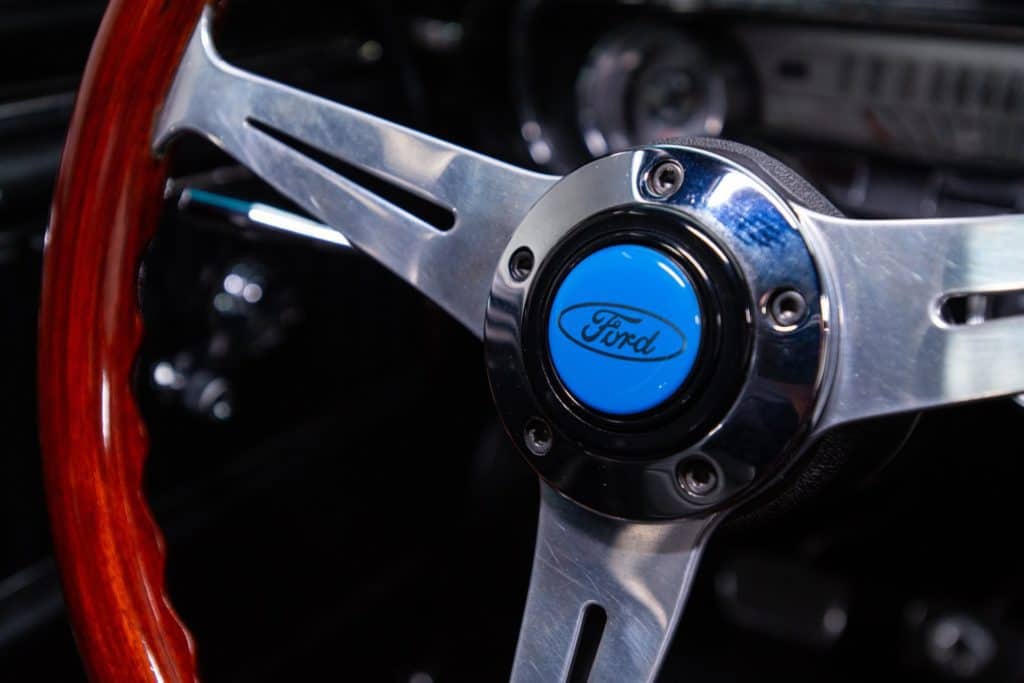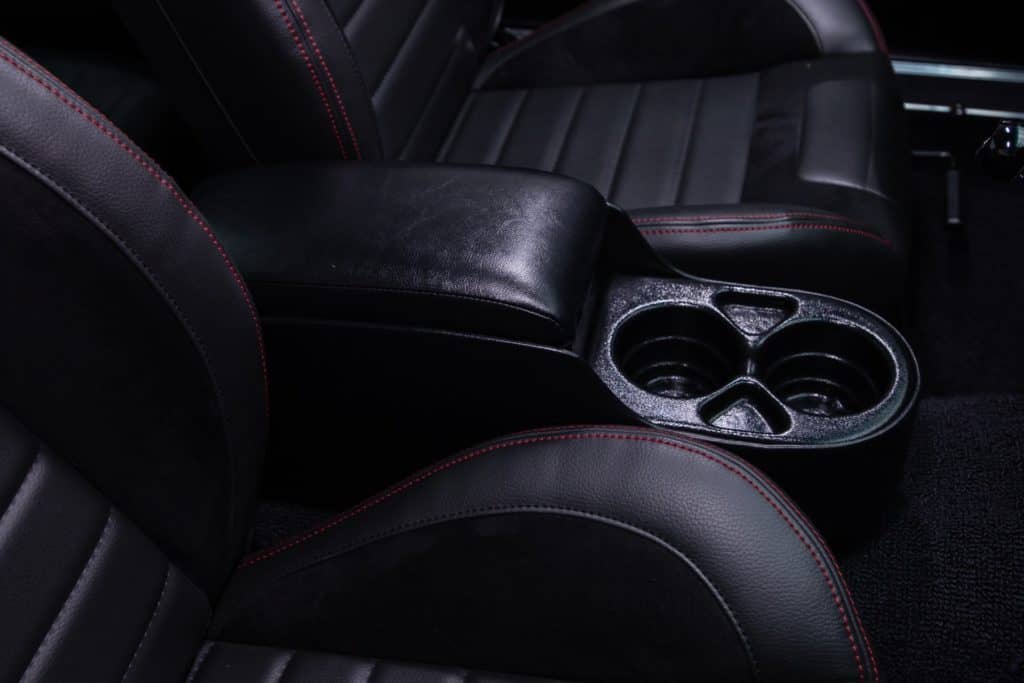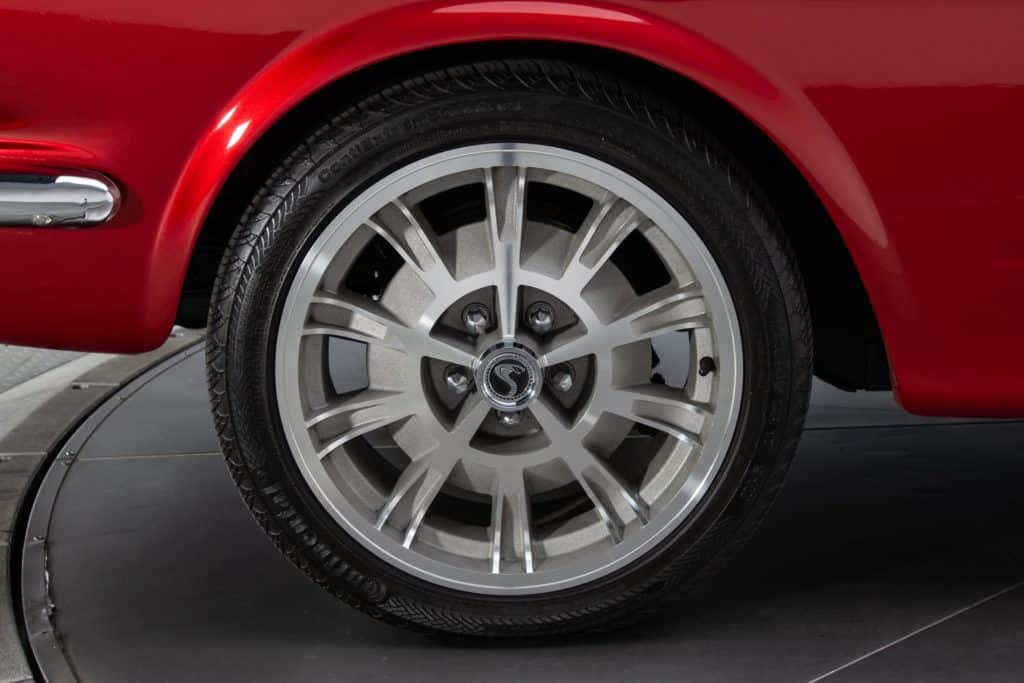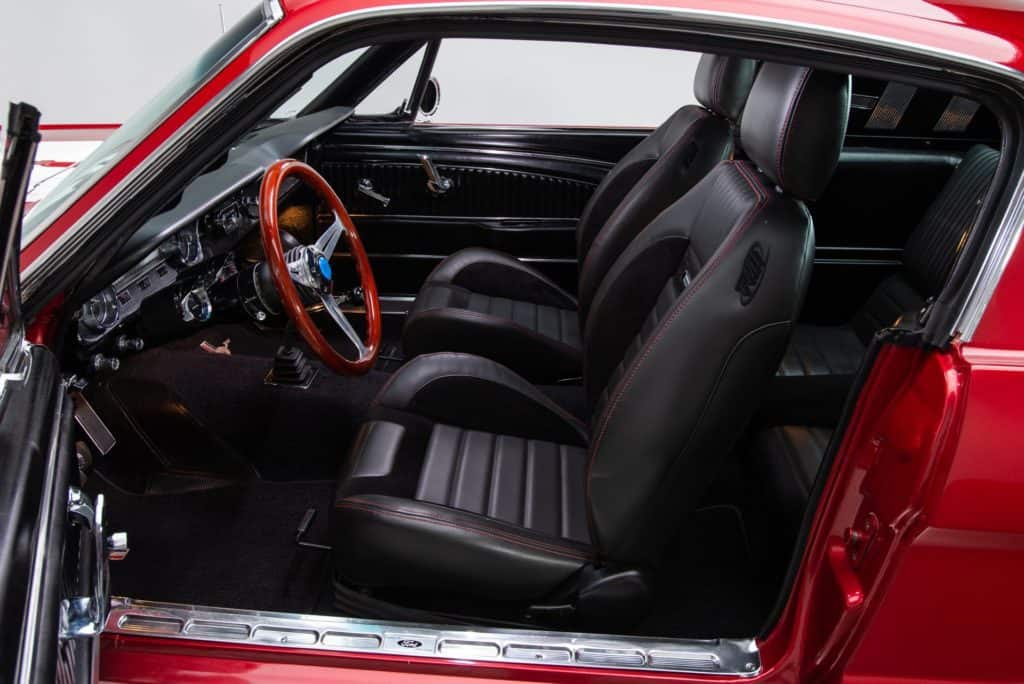Classic Good Looks
This polished thoroughbred combines 302 cubic inches of VanGordon power with a tuned suspension. In addition, it has a professionally made 9-inch, and a Tremec 5-speed. It’s a chance to experience the summer wind at the wheel of a Detroit legend. This 1965 Ford Mustang Fastback Restomod is gorgeous.
This 1965 Ford Mustang Fastback restomod has a skilled, ground-up restoration that mixes robust metal with refined aesthetics. That paint looks great under Pearl Shelby top stripes. Those stripes are an excellent complement to a pinned, Shelby-style hood.
The car’s badges have been shaved – only a pony on the mesh grille remains. Fresh chrome and stainless include clean bumpers, factory handles, and a duo of small mirrors. And those awesome bolt-ons terminate, quite literally, with a stylish Mustang GT rear valance.
1965 Ford Mustang Fastback Restomod – Ford Power







VanGordon Performance in Upland, California constructed this coupe’s 302 cubic inches of Ford power. A K&N X-Stream air cleaner funnels airflow into a Holley Street Avenger 4-barrel, which feeds an Edelbrock Performer 289 intake.
1965 Ford Mustang Fastback Restomod intake linked to Edelbrock Performer RPM heads with polished valve covers, an oil cap, Comp roller rockers, 2.02 intake, and 1.60 exhaust valves. These heads fill 4.030-bore cylinders with a 3.000-inch stroke and forged Speed Pro pistons. A nodular crank spins a Comp hydraulic cam with.286 lift and 219 duration to push the pistons.
A quality MSD distributor sequences fire between a chrome coil and loomed Taylor plug wires. Tri-Y headers discharge spent gases. Moreover, the satin Black engine bay is immaculate. In fact, it’s all the way from its polished brace bar to its polished oil pan.
1965 Ford Mustang Fastback Restomod
Not surprisingly, power meets the pavement through a thoughtfully upgraded chassis. The engine twists torque through a Tremec T5 5-speed transmission. In addition, it’s sourced directly from D&D Performance. However, that transmission spins a Bill Thomas Enterprises 9-inch. 3.50 gears, 28-spline axles, and Traction-Lok differential complete it. Furthermore, this axle pushes a 1-inch sway bar-equipped Mustang suspension. Lastly, it has KYB shocks, 620 front springs, and 5-leaf mid-eye rear springs.
Turns come easy thanks to modern power assist. However, stops are a cinch thanks to an upgraded dual-circuit braking system that employs 11-inch slotted SSBC rotors in front of factory drums. In addition, the aforementioned headers dump spent gases into aluminized pipes, which align an H-shaped crossover with glass pack mufflers and polished stainless tips. Moreover, everything rolls on California Pony Cars alloys, which twist 225/45ZR17 Continental ContiExtreme Contacts in front of 235/45ZR17 General Exclaim UHPs.
Upgrades Galore







Pop the doors in this 1965 Ford Mustang Fastback restomod and you’ll find an attractive Black interior that features upgrades in all the right places. However, firm TMI seats adorn in red-stitched Pony covers. In front of those thrones, a dual-cowl dash plant rebuilt factory telemetry between direct-fit audio, Auto Meter accessory gauges, and a Scott Drake Rally Pac.
Below that dash, fade-free carpet floats Mustang-themed floor mats under a polished shifter. In addition, there’s a small console and factory side panels fashioned around, and 6-inch Kicker speakers. In addition, the driver spins a handsome Grant steering wheel around stainless-trimmed foot pedals.
Related Questions:
The Mustang used the Falcon’s simple construction and let Ford come up with a base Mustang price of only $2,368 when many cars began at more than $3,000. The base 1965 Mustang had bucket front seats, a 101-horsepower six-cylinder engine, and a three-speed manual transmission with a floor shifter.
The 1965 and 1966 Mustang Fastback was marketed as the “Mustang 2+2“, because a fold-down rear seat was included as standard equipment. … In 1967, the rear seat became optional, and the “2+2” designation was dropped.
The 1965 Mustang was available with two different engines, the 200 and the 289, although the 289 was available with three different power ratings. The 200 cubic inch six-cylinder was standard equipment and produced 120 horsepower.


